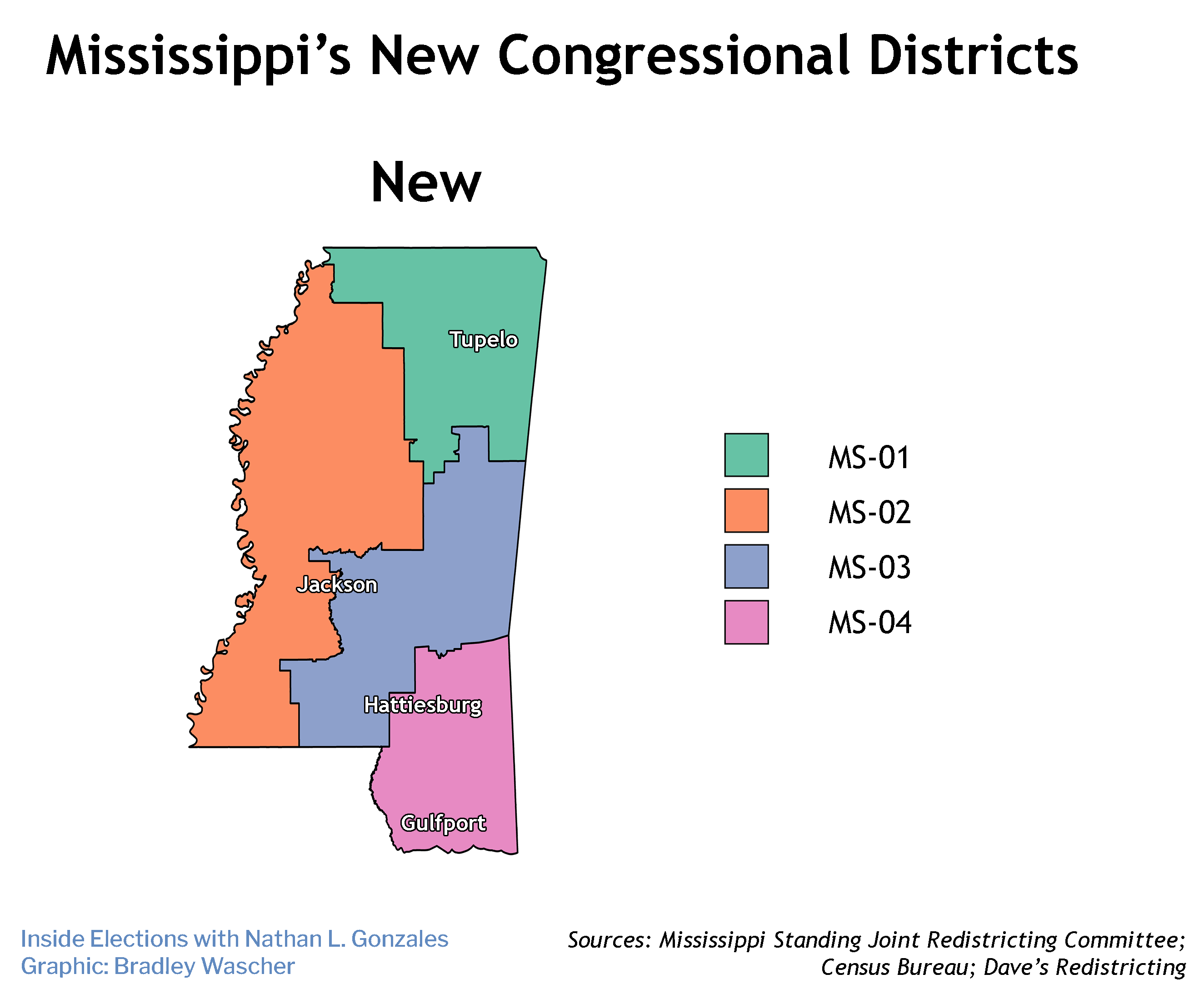Mississippi was one of just three states to see its population decrease from 2010 to 2020, according to data released by the Census last year. But unlike the other two states that lost population over the decade (Illinois and West Virginia), Mississippi’s loss was not great enough to cost it a congressional seat during reapportionment.
As a result, the Magnolia State will continue to send four representatives to Congress through 2030.
With the Voting Rights Act requiring at least one Black-access district in the state — the statewide population is nearly 40 percent Black — the redistricting process mainly consisted of state legislators in Jackson re-balancing the four districts’ populations, which had grown unequal due to population shifts.
The result is a status quo map that should elect three Republicans and one Democrat to Congress for the coming decade.

1st District
The 1st District, in the northeastern corner of the state, sheds Winston County and some of its area in the north of Oktibbeha County, to the 3rd District. It is otherwise unchanged.
President Donald Trump would have carried the new 1st, 65-33 percent. GOP Rep. Trent Kelly’s only vulnerability would be in a Republican primary, but he has no serious challengers. Initial rating: Solid Republican.
2nd District
The rural, majority-Black 2nd District is still based in the Mississippi Delta, in the state’s western half. The 2nd lost 9 percent of its population over the last decade, so it had to expand considerably to meet its ideal size.
It did so by picking up slightly more of downtown Jackson, as well as Adams, Wilkinson, Amite, and Franklin counties at the district’s southern edge, nestled next to Louisiana.
The new 2nd would...

